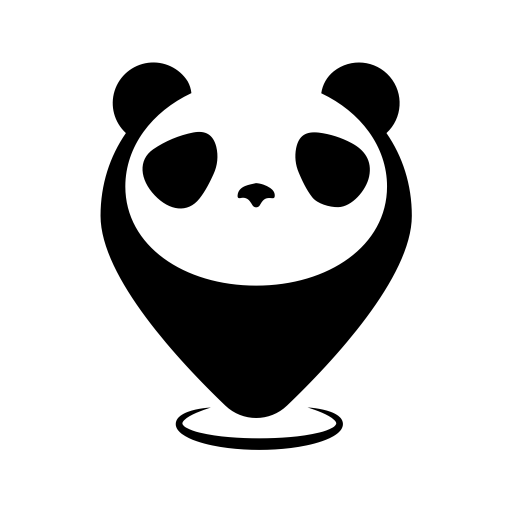The Forbidden City was the Chinese imperial palace from the Ming dynasty to the end of the Qing dynasty—the years 1420 to 1912. It is located in the centre of Beijing, China, and now houses the Palace Museum. It served as the home of emperors and their households as well as the ceremonial and political centre of Chinese government for almost 500 years.
see our tour discovering the largest palace in the world
Imperial Beijing VIP Day Tour, US$77
The common English name, “the Forbidden City”, is a translation of the Chinese name Zijin Cheng (Chinese: 紫禁城; literally: “Purple Forbidden City”). Purple, or Zi (紫) in Chinese, refers to Ziwei Star which is in the centre of heaven according to ancient Chinese astrology.
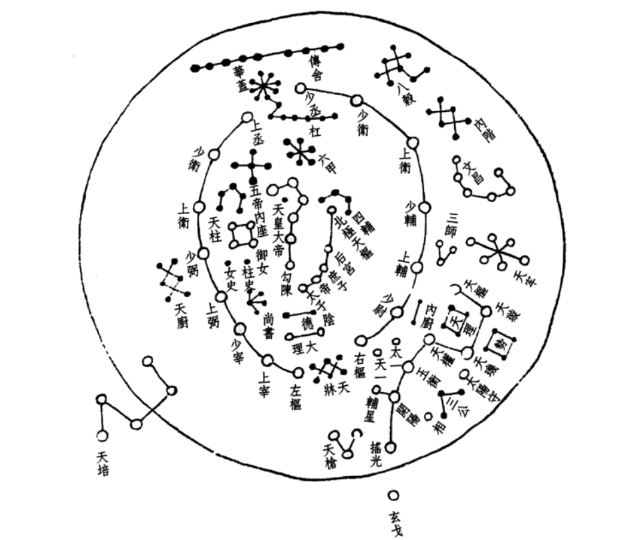
The Picture of Ziwei Stars by Gu Xichou, 17th Century
The ancient astrologists believed Ziwei star located at the centre of the heaven and was the home of the celestial emperor. Purple (Zi) then referred to the residence of its counterpart, the terrestrial emperor, on the earth.
Jin (禁) means forbidden. As you may see a sign in China or Japan with ‘禁烟’ (traditional Chinese 禁煙) meaning no smoking is allowed. The Forbidden (禁) City refers to the fact that no one can enter the palace without the permission.
 When Zhu Di, the son of the first emperor of Ming Dynasty, won the battle for the throne, he ordered Beijing to be the north capital of the empire and Nanjing, the south capital. The construction began in 1406 and finished 14 years later in 1420 with hard working of a million best workers from the country.
When Zhu Di, the son of the first emperor of Ming Dynasty, won the battle for the throne, he ordered Beijing to be the north capital of the empire and Nanjing, the south capital. The construction began in 1406 and finished 14 years later in 1420 with hard working of a million best workers from the country.
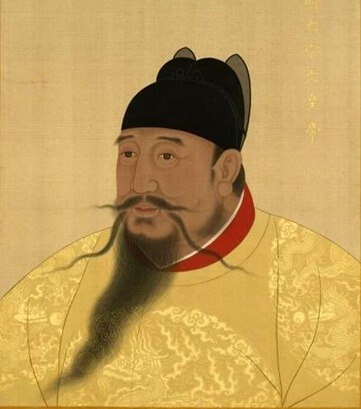 Zhudi, Emperor Yongle
Zhudi, Emperor Yongle
The planning and structure of the Forbidden City strictly followed the guidelines of Zhouli • Kaogongji (周礼• 考工记 Rites of Zhou • Records of Construction, first written in 12th century B.C.). From the layout of the palaces to each decor of the buildings depicts the ancient Confucian’s ideal to build a peaceful and harmonious hierarchical society with the emperor at the top.
see our tour discovering the largest palace in the world
Imperial Beijing VIP Day Tour, US$77
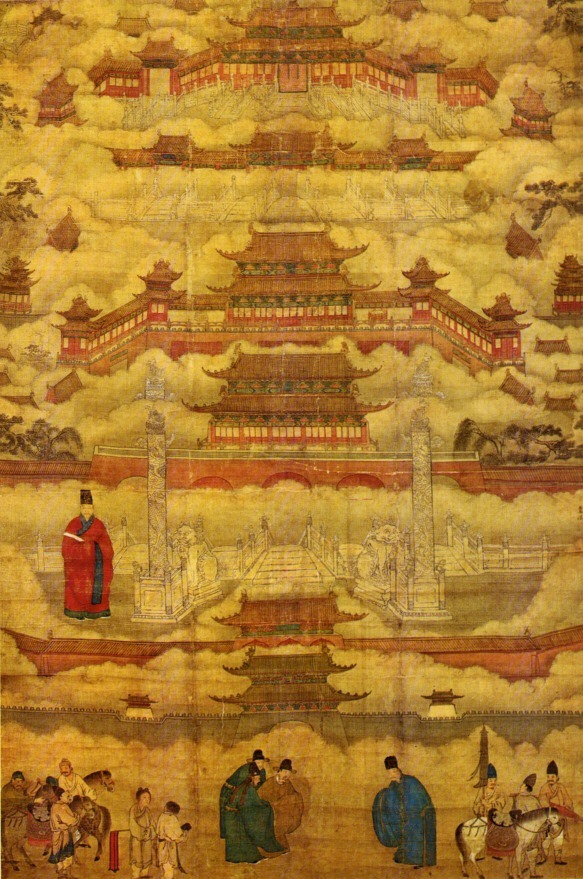 The Forbidden City as depicted in a Ming Dynasty Painting
The Forbidden City as depicted in a Ming Dynasty Painting
Matteo Ricci, an Italian Jesuit priest, is the first westerner to be invited into the Forbidden City. In 1601, he became an adviser to the imperial court of the Wanli Emperor in recognition of Ricci’s scientific abilities. Matteo Ricci and Chinese collaborators printed and presented Map of the Ten Thousand Countries of the Earth to the emperor in 1602. It is the oldest surviving map in Chinese to show the Americas.
 Portrait of Matteo Ricci, 1610 by Emmanuel Pereira. Jesuit House, Rome.
Portrait of Matteo Ricci, 1610 by Emmanuel Pereira. Jesuit House, Rome.
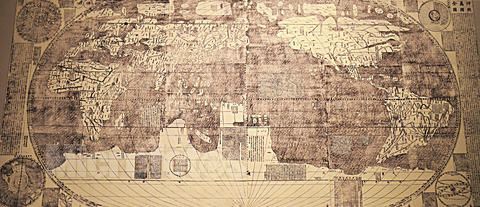 Map of the Ten Thousand Countries of the Earth, wood block print in 1602
Map of the Ten Thousand Countries of the Earth, wood block print in 1602
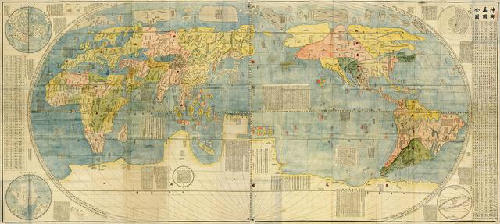 The colored edition copied in Japan in 1604
The colored edition copied in Japan in 1604
Felice Beato, an Itilian-British photographer, is the first people to take photographs of the Forbidden City. He was sent from India to photograph the Anglo-French military expedition to China in the Second Opium War in 1860. On November 7th, 1860 he entered the Imperial City from the south and walked along the axis through Golden Water River Bridge, Tian’anmen and Duanmen. He took the photograph of Wumen (Meridian Gate) ,the southern gate of the Forbidden City, but was not allowed to continue inside. Beato rounded the Forbidden City along the moat and reached Jinshan, the hill at the north of the Forbidden City, and took the bird’s eye photo.
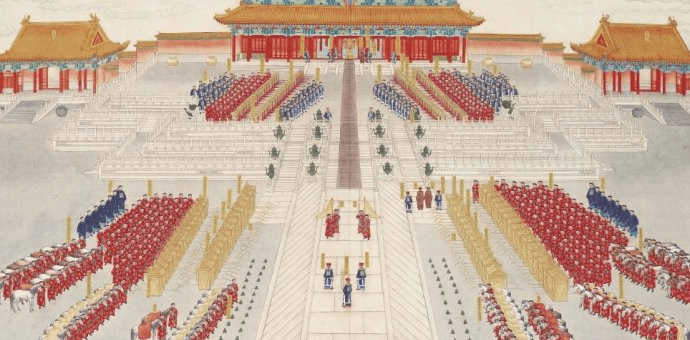 Emperor Guangxu’s wedding ceremony held at the Forbidden City in 1889
Emperor Guangxu’s wedding ceremony held at the Forbidden City in 1889
The last emperor, Puyi, abdicated in 1912 and the Republic of China established. Puyi and the imperial court were allowed to remain in the northern half of the Forbidden City as well as in the Summer Palace, but he was expelled from the Forbidden City by warlord Feng Yuxiang in 1924. The Palace Museum was then established in the Forbidden City in 1925.
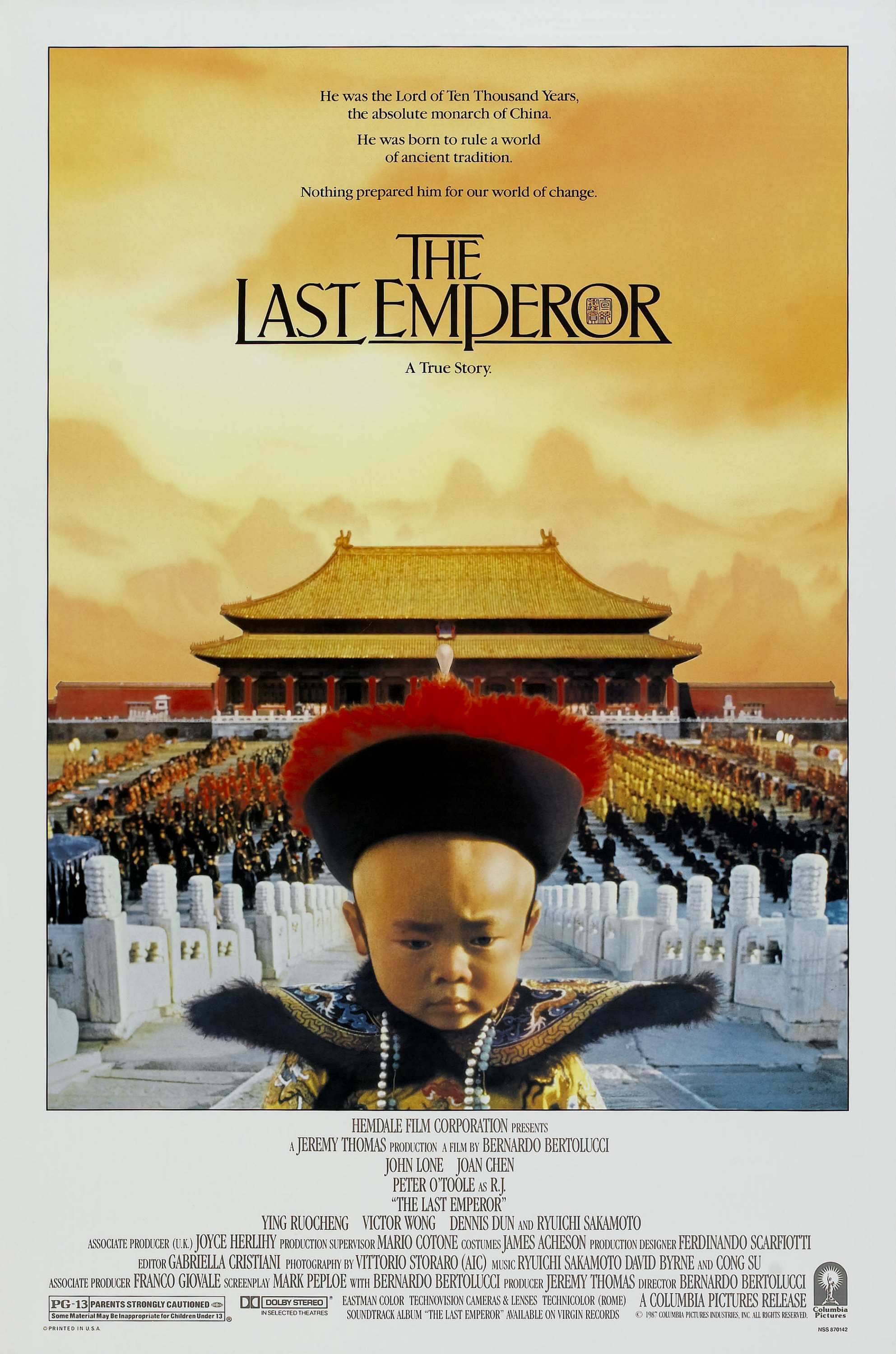 Film The Last Emperor
Film The Last Emperor
In 1933, the Japanese invasion of China forced the evacuation of the national treasures in the Forbidden City. Approximately 231,910 objects from the Palace Museum were moved to Taiwan in 1948 and National Palace Museum in Taipei opened to public in 1965. Both museums in Beijing and Taipei descend from the same institution, but were split after the Chinese Civil War. With over 14 million annual visitors, the Palace Museum in Beijing is the most visited Museum in the world.
see our tour discovering the largest palace in the world
Imperial Beijing VIP Day Tour, US$77



 T
T








